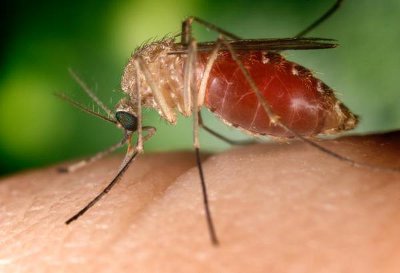Anopheles Mosquito
Category: Mosquito

Facts about Anopheles Mosquitos. Malaria is one of the common diseases that are transmitted by female Anopheles Mosquito from the genus Anopheles. These mosquitoes usually suck blood from one person and transmit it when sucking blood from the next individual. Mosquitoes are generally grouped in 41 genera which together bring a total of about 3,500 species of mosquitoes. Anopheles mosquitoes are organized into about 430 known species but only 30 to 40 species are able to transmit malaria, here is a few Anopheles Mosquito; Anopheles albimanus, Anopheles arabiensis, Anopheles barberi, Anopheles bellator, Anopheles crucians, Anopheles cruzii, Anopheles culicifacies, Anopheles darlingi, Anopheles dirus, Anopheles earlei, Anopheles freeborni, Anopheles funestus, Anopheles gambiae, Anopheles introlatus, Anopheles latens, Anopheles maculipennis, Anopheles moucheti, Anopheles nili, Anopheles punctipennis, Anopheles quadrimaculatus. On a normal case, you will never know whether a particular mosquito is able to transmit malaria because the species resemble each other and can only be differentiated upon close examination in laboratories.
Geographic Distribution of Anopheles Mosquito
The Anopheles Mosquito are not found in a specific part of the world but are rather distributed all over, with the exception of the Antarctica because of the colder temperatures there. The region and the environment will dictate the species that will transmit the malaria viruses. The Anopheles Mosquito are commonly found in areas where malaria is endemic but research has also proven that there are other areas where malaria has been eliminated and you can still see some Anopheles Mosquito species.
The Life Cycle of Anopheles Mosquito
Just like any other genus of mosquitoes, the Anopheles Mosquito has a 4 stage cycle that includes the egg, the larvae, the pupa and the adult Anopheles. In the first three stages, the life cycle is aquatic and lasts about 5 to 14 days depending on the type of species of the Anopheles and the prevailing temperatures. In the last stage, that is the adult stage the Anopheles mosquito becomes a carrier of malaria. The female Anopheles Mosquito can live up to a whole month in the wild but when in captivity it can live even longer. The average life of the Anopheles Mosquito however averages between one and two weeks.
The adult females Anopheles Mosquito lay between 50 and 200 eggs in every single oviposition. The eggs are laid directly on water and they float for some days before hatching two or three days later. In colder climates, the eggs may take up to three weeks to hatch.
In the larvae stage, the Anopheles Mosquito has a well developed mouth and head making it able to feed on the surrounding microorganisms. The thorax is usually large and the abdomen segmented. The larvae do not have a respiratory siphon like the rest of the mosquito genera. The larvae usually feed on bacteria, algae and other microorganisms that are found on the surface of the water. Commonly, the Anopheles Mosquito larvae can be found in unpolluted waters and at times in salty water marshes, rice feeds and mangrove swamps.
A Anopheles Mosquito doesn't have teeth. The female Anopheles Mosquito bites with a long, pointed mouth-part called a "proboscis". The mosquito have pointed mandibles - meaning either half of a crushing organ in an arthropod's mouth-parts, as well as maxilla that are used when the Anopheles Mosquito locates a capillary, then draw blood through one of two tubes. The female mosquito zeros in on its victim using a combination of chemicals in the person's sweat, exhaled carbon dioxide and animal or human scent. They use the serrated proboscis to pierce the skin and locate a capillary, then draw blood through one of two tubes.
The pupa has the thorax and the head merged into one unit called the cephalothorax. Although it stays under water, the pupa usually comes to the surface so that it can breath. In a few days, the dorsal surface of the cephalothorax breaks and an adult Anopheles Mosquito emerges.
The adult Anopheles Mosquito have a slender body which has three sections typical of an insect that is the head, thorax and abdomen. The head has sensory organs to collect information and has the apparatus for feeding.
Feeding of Anopheles Mosquito
The Anopheles Mosquito feed on sugars so as to get energy but will occasionally feed on blood meal so as to help them in the development of their eggs.
There are on average about 175 species of mosquitoes in the United States and more than 2,800 species of mosquitoes in the rest of the world.
Only a female Anopheles Mosquito will bite a human. Both female and male Anopheles Mosquito feed mainly on plant nectar and fruit, the female needs the protein in blood to help the female to develop their eggs. There is a couple of resting days before the female Anopheles Mosquito will lay the eggs. Most of the Mosquitoes are crepuscular- meaning appearing or active in twilight or dawn.
Anopheles Mosquito can drink blood up to three times its weight. It would take over a million bites to drain all the blood out of your body.
An average Anopheles Mosquito life is less than two months. The Male Anopheles Mosquito usually only lives about 10 days or less, while female Mosquito can live about six to eight weeks.
"Scientific name for Masquito is Culicidae". The word Mosquito is Spanish for "little fly". The word Mosquito its known origin is from the early 16th century. Mosquitoes in Africa are named "Mozzies".

 Back To Category Mosquito
Back To Category Mosquito